Maine has a surprising amount of mineral diversity for such a small location, particularly when it comes to the treasures contained in pegmatite. Spread across the state are a wide variety of semi-precious gemstones, interesting crystals, and even some of the more classic gems. It’s just a matter of finding them.
So, if you’re planning on heading to Maine and fancy a look at some stones then check out our list of the rocks, minerals, and gemstones found in Maine.
1. Tourmaline
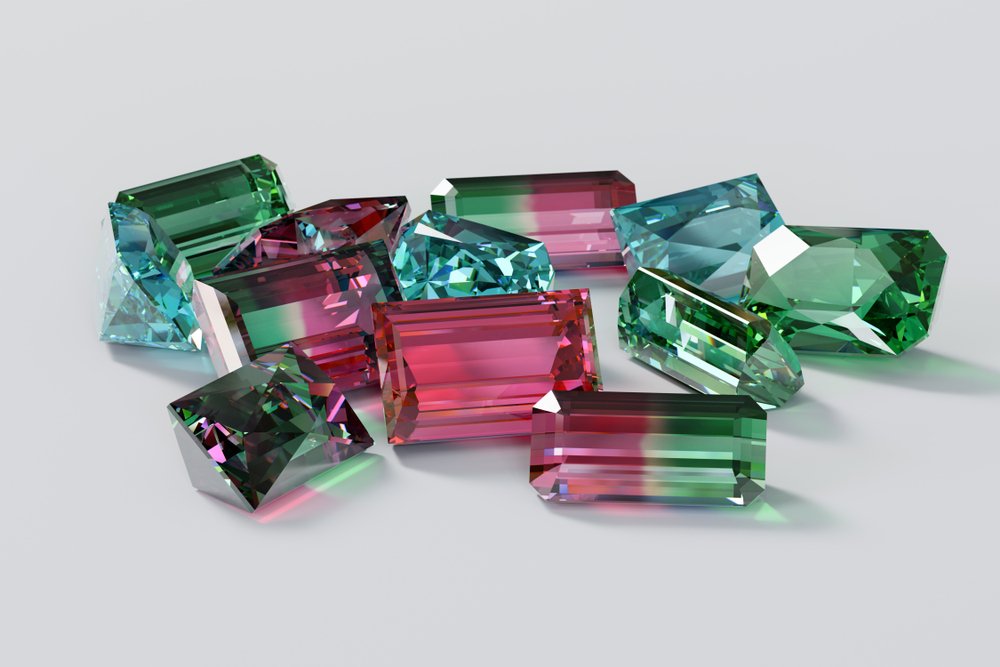
The state mineral of Maine, tourmaline, is a fascinating crystal. It’s perhaps best known for the “watermelon” variant but there is a shocking variety of these stones available. While most of it is the opaque black schorl form, there are also richly colored specimens that can compare to the best of gemstones such as rubellite. There’s a lot to take in in this crystalline family.
Of the various gemstones out there, tourmaline is perhaps the only one that’s considered American. Maine has the single largest deposit of gem material in the US, over 3.5 million carats of gem-grade tourmaline, and is said to have the highest quality tourmaline in the world. Maine has a wide variety of tourmaline and it’s also the origin of the famous watermelon variety mentioned above.
Tourmaline in Maine has many colors. The best of them are comparable to gem-quality tourmaline from across the world, matching the deep reds, blues, and greens of the various subtypes of this stone. Maine is a world leader in the production of tourmaline, with tons of it spread throughout the wilderness of the state in various pegmatites.
If you’re looking for tourmaline in this state, the following areas are particularly rich in it:
- Porcupine Hill Quarry
- Bemis Stream Prospect
- Mount Apatite Quarry
These are just a few of the locations. If there’s pegmatite to be found in this region it will most likely contain some form of tourmaline.
2. Beryl
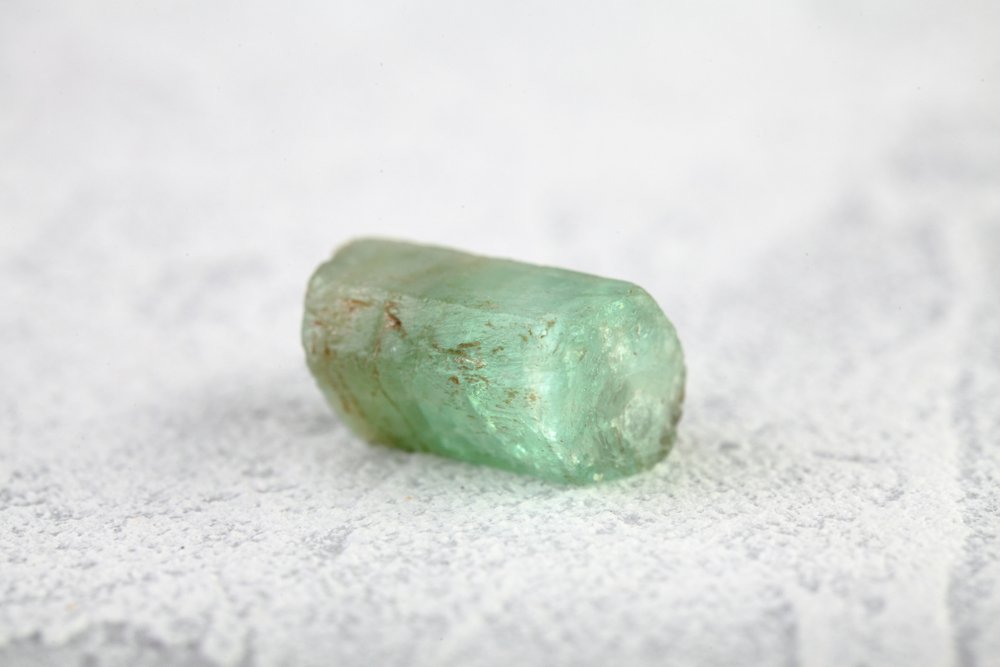
Beryl is a family of gemstones, and some great stuff appears in it. There are emeralds, morganite, heliodor, aquamarine, and a few other more obscure gemstones to be had. They’re primarily identified by color, with each color having some form of a designated name. Beryl appears in Maine in large forms, making it an attractive target for rockhounds.
Indeed, one of the largest beryl crystals in the world hails from Maine. There is also the enormous morganite known as the Rose of Maine, a morganite crystal of colossal proportions that weighs in at over 50 pounds. The varieties can seem endless, with sterling examples of heliodor, morganite, and clear beryl regularly pulled from the Earth.
Beryl is extremely hard, at an 8 on the moh’s scale, which has made it a favorite of jewelers since ancient times. Add in the deep colors that sometimes emerge and the unique nature of the crystals and you have something that’s clearly a treasure even before it’s been cut. Many gem-grade samples of this material are kept as-is, showing off the work of nature instead of the lapidary.
There are over 300 places known to host beryl in Maine, but the following are particularly good:
- Melrose Quarry
- Near Albany
- Trenton Quarry
Like most of the interesting material in Maine, you’re primarily looking for pegmatite to dig into.
3. Topaz
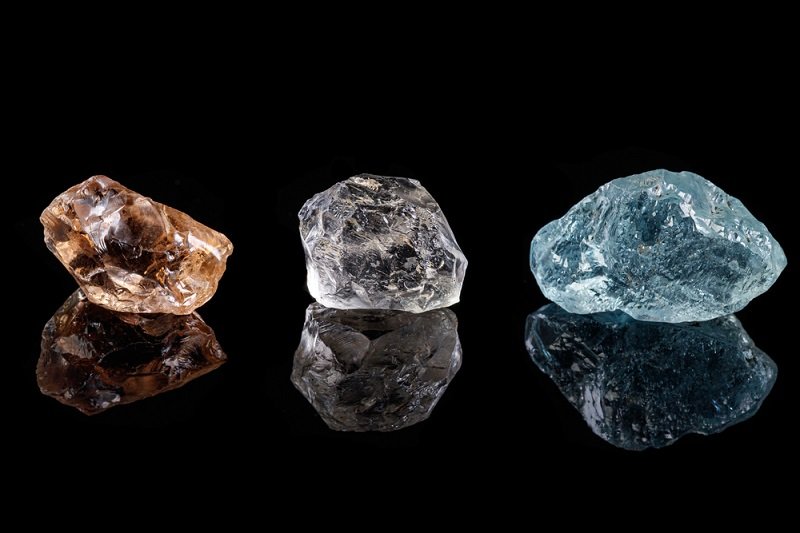
Topaz is a brilliant gemstone, and one that’s often overlooked. While the classic association is with a golden-brown gemstone, modern methods have made blue the “default” color. Blue topaz is very rare in nature, but clear topaz that can be irradiated and become blue is very common. Unless specifically stated otherwise, with papers to prove it, blue topaz is always assumed to be treated.
Topaz from Maine is generally clear when it comes out of the ground. There are many large, high-clarity specimens found as well as those with a large number of inclusions in the interior that cause them to become a cloudy white. It’s rarer than many of the gemstones of Maine as well, more of an interesting find on the side than the target of most hounds.
This topaz is found in pegmatites in a few locations on the western side of the state. The crystals range from a few millimeters in size to a couple of inches if you get particularly lucky. This colorless version isn’t worth much, but it’s found in the same areas as other, more expensive stones.
If you’re looking to get some topaz for your collection, then you’ll want to look at quarries and pits in Oxford County and the neighboring Sagadahoc County. Most of the topaz in Maine is in these locations.
4. Kyanite
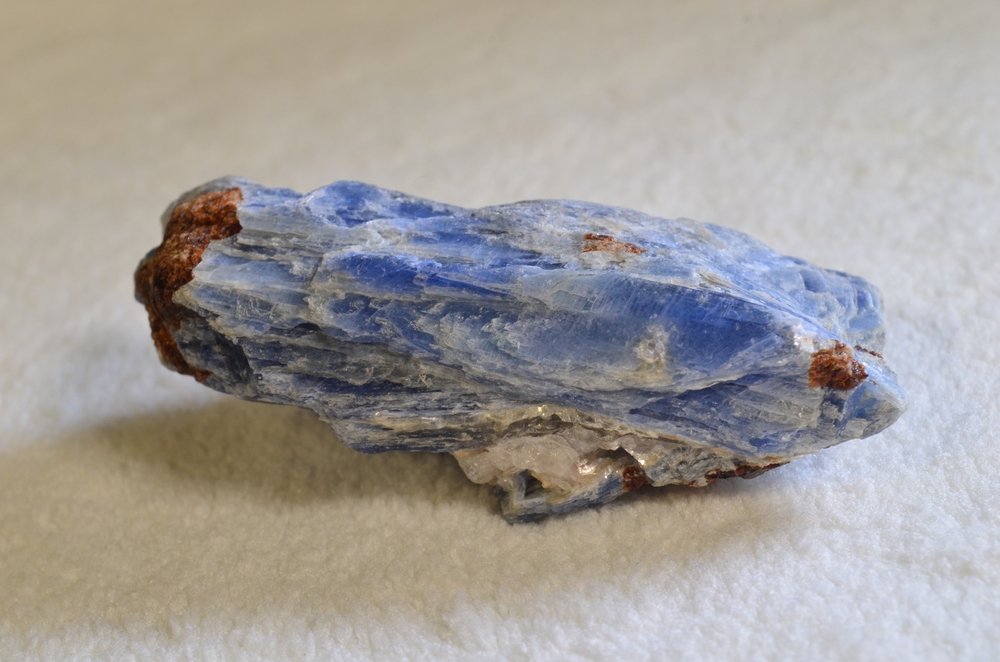
Kyanite is a blue, bladed crystal that’s often seen in mineral collections. It has a few odd properties and a wide range of different looks. Kyanite is usually kept as-is but particularly fine specimens are cut en cabochon or faceted. Both of these forms of high-grade kyanite contain streaks showing the lines of the crystals.
Kyanite is a strange one, especially for Maine. The vast majority of cool stuff in this state is found in pegmatite, but kyanite is found in metamorphic stone. It’s often used as an indicator of deep burial of an area, showing metamorphosis has occurred deep below the ground. The blue color is best known, but there are a few others.
The most interesting property of kyanite is that it possesses directional hardness. If you scrape parallel to the crystal growth with testing picks you’ll end up with a reading of 4.5-5. Meanwhile, perpendicular scratches will give you a reading of 7-7.5, more typical for a silicate mineral. This makes kyanite easy to identify if there are co-occurrences of similar minerals in the area.
It can be found in mica-schist formations in Cumberland County. These are the only confirmed deposits, but it appears to also be found a bit north in Franklin County near Mount Abram.
5. Staurolite
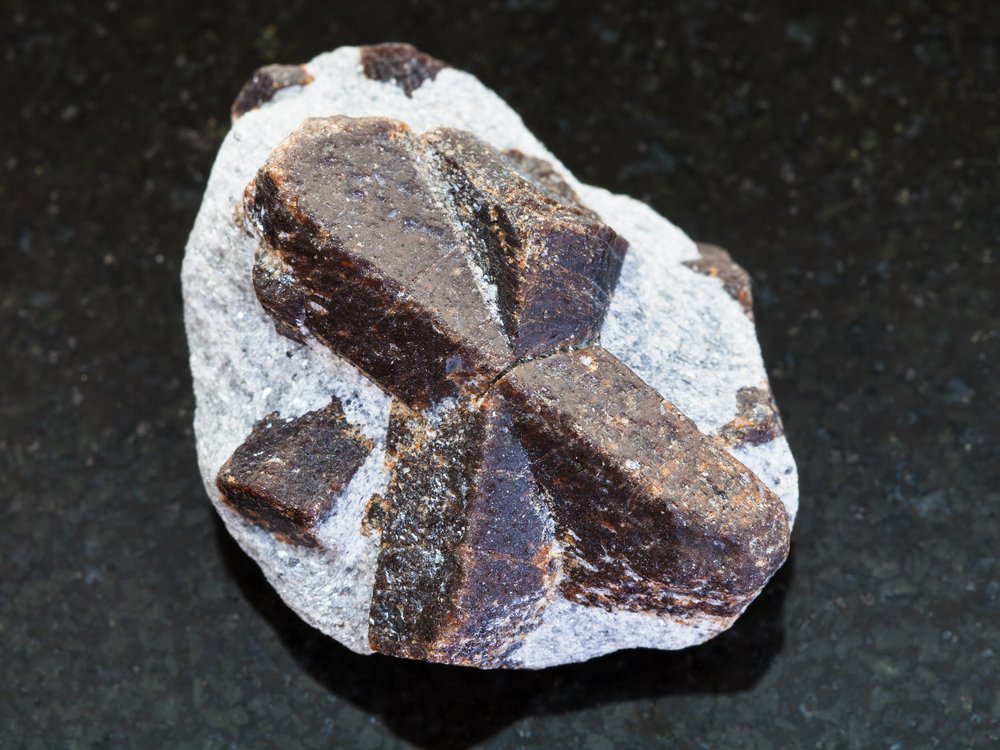
Staurolite is a strange mineral, known more for its growth patterns than any particular property. These crystals tend to grow at right angles to each other in pairs, creating crosses that can be seen on the exterior of the host stone. This is known as cruciform penetration twinning. It’s a reddish-brown neosilicate mineral, with a hardness of 7 to 7.5 on the Moh’s scale.
Staurolite is actually the state mineral of Georgia in addition to being found in Maine. The crosses that it forms are collected by many, either within the matrix or after being separated from the host rock. This mineral mainly occurs in metamorphic stones, which would be mica-schist in Maine.
Maine produces some great samples. Often staurolite is very included and opaque, but many of the samples pulled from the bedrock in Maine are actually a transparent red. They seem to appear twinned a bit less frequently than in many locations, but there are crosses and even rare six-rayed stars found in this region.
Staurolite is concentrated in the southwestern portion of the state. The best place to start looking is in mica-schist in Cumberland County but it can also be found near Augusta and in Knox County.
6. Vesuvianite
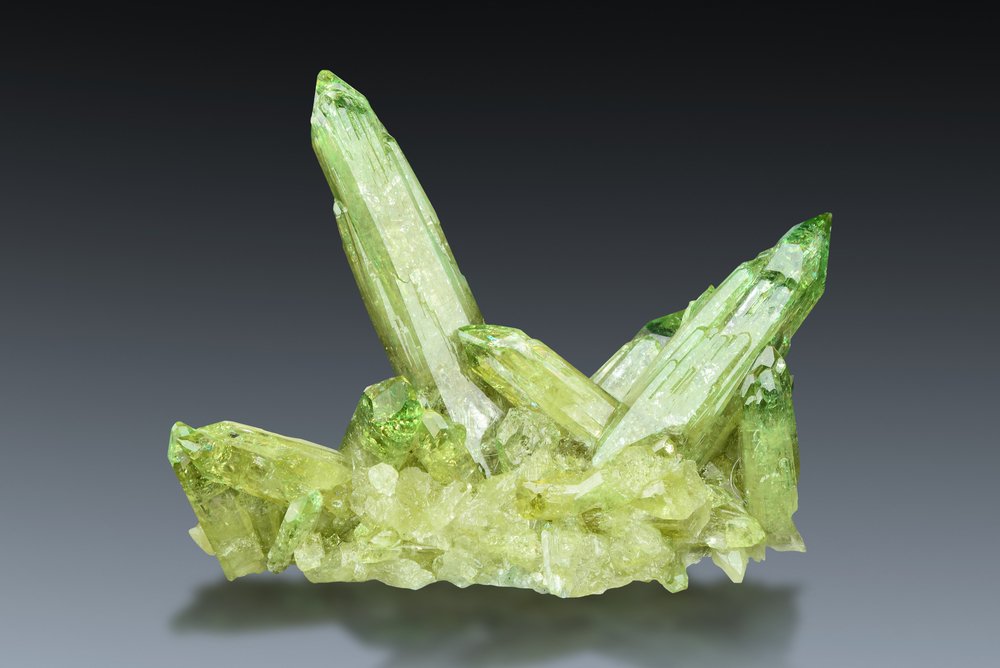
Vesuvianite is another silicate mineral found in Maine. In this case, it’s a greenish crystal formation, with short pyramids or long prisms forming. It’s also known as idocrase, the original name stems from its discovery in the area surrounding Mount Vesuvius.
Vesuvianite is most often found in skarns. A skarn is something like the metamorphic equivalent of igneous pegmatites. They’re a formation that’s made of very large grains (see: individual crystals) that often occur around dolomite and limestone formations. They’re formed from high temperatures and pressures and often break through the earth on the edges of metamorphic and igneous stones.
These skarns are spread across much of Southwestern Maine and even contain some of the same minerals as pegmatites. Vesuvianite and garnet are the main prizes found in skarns in Maine, and they’re often a rich source of pyroxene stones like jade in other locations. Maine’s idocrase tends towards being a dark olive and fairly opaque.
They are concentrated in Cumberland County and York County in the southwest of the state, with some also being found near limestone formations farther north.
7. Garnet
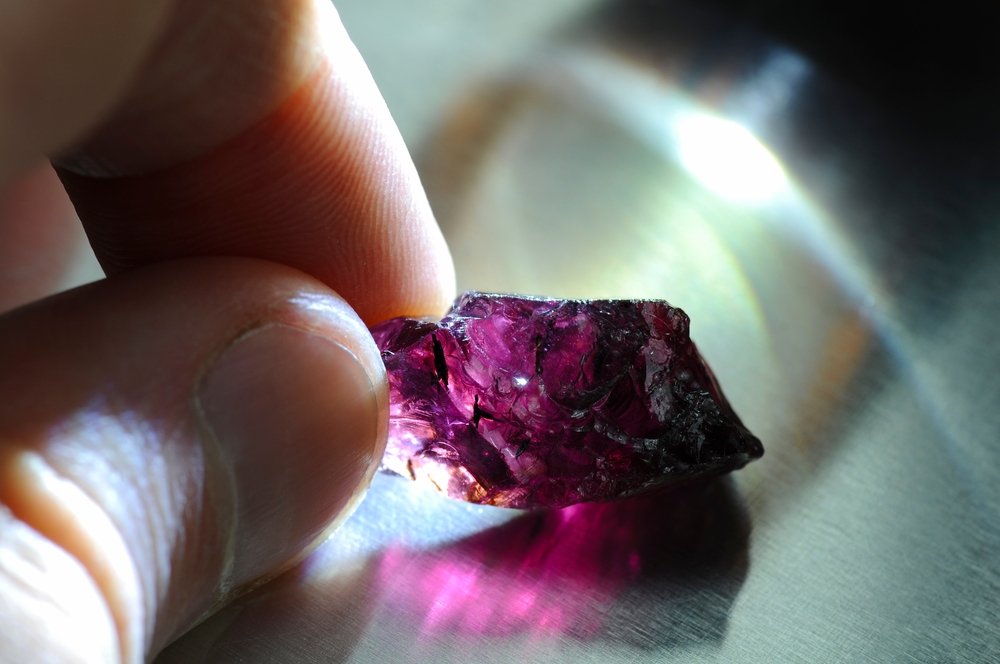
Garnets are one of my favorite stones, there’s a dazzling array of colors and forms hidden within them. In Maine, you’ll primarily see red almandine garnet and the more orange spessartine garnets. These stones can be gem quality depending on the location, making them a good target for rockhounds.
The garnet family is a series of closely related stones, used as both gems and abrasives for much of human history. Almandine garnet, in particular, is used as an abrasive still in modern machinery. It’s actually the most common abrasive used in waterjet cutters, which are high-pressure jets of water that are used to cut metal, stone, and… pretty much everything else.
Garnets are often found in both skarn deposits and in micha-schist. If you’ve been following along you’ll note that means they can be found in the western portion of the state. They often occur as single dodecahedral crystals with a bright red color, known colloquially as a carbuncle. The more formal use of that term actually refers to a red almandine garnet cut en cabochon these days.
If you’re looking to collect some yourself, then you’re in luck. Almandine garnets can be found in the Ragged Jack Mountains, Edgecomb Quarry, and throughout Lincoln County. On the other hand, you can pick up spessartine garnets to the north of Byron.
8. Quartz/Amethyst/Rose Quartz
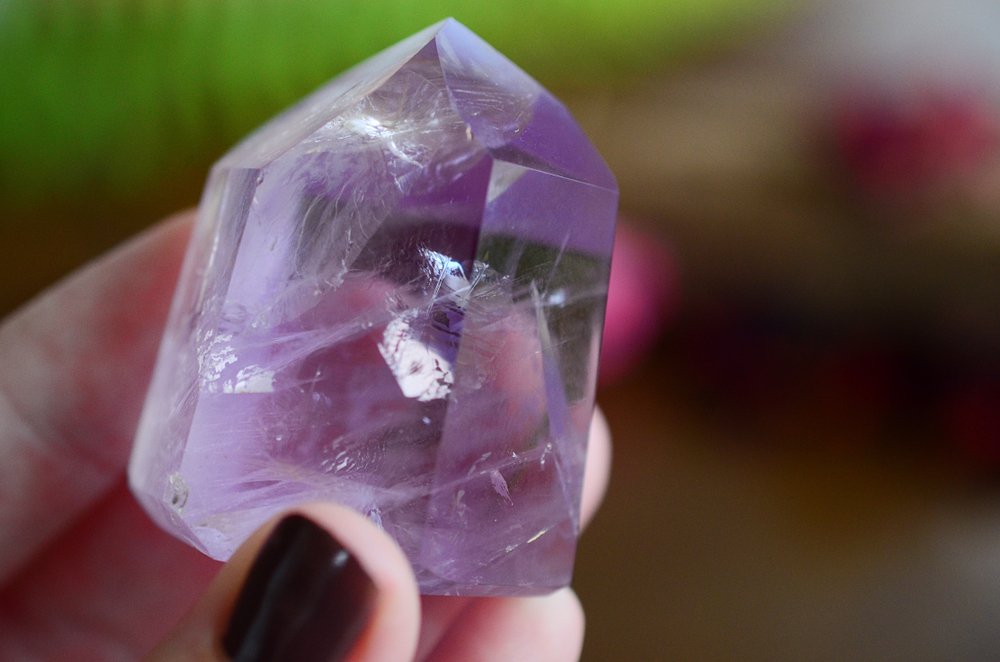
The most common mineral in our planet’s crust is silica, and quartz is one of the foremost forms of it. Quartz is a hexagonal, usually clear, crystal that forms under intense pressure and long periods of time. It’s the primary polymorph of macrocrystalline silica. It’s only recently that another form, moganite, has been found in nature outside of cryptocrystalline silica-based stones.
Amethyst is just quartz with a few iron ions scattered in the crystals’ color center. This creates a purple crystal. With more heat, the same stone can end up as the yellow-colored citrine. There’s also a very narrow band between the two which allows quartz to form as the light-green colored prasiolite.
Rose quartz, on the other hand, is a stranger form. It’s rarely found as single crystals and is instead found as a pink, interlocking mass of tiny quartz crystals that lead to very large grain. Single crystals of rose quartz are rare and worth a lot of money due to their rarity. It’s also found in Maine. Maine rose quartz can be high-quality, there are many examples of finely formed crystals of the stuff.
If you’re looking for one of these forms of quartz, the following areas should yield something:
- Oxford County
- Sagadahoc County
- Washington County
These areas, especially the quarries and roadcuts in Oxford County, are all known to yield quartz.
9. Jasper/Agate/Chalcedony
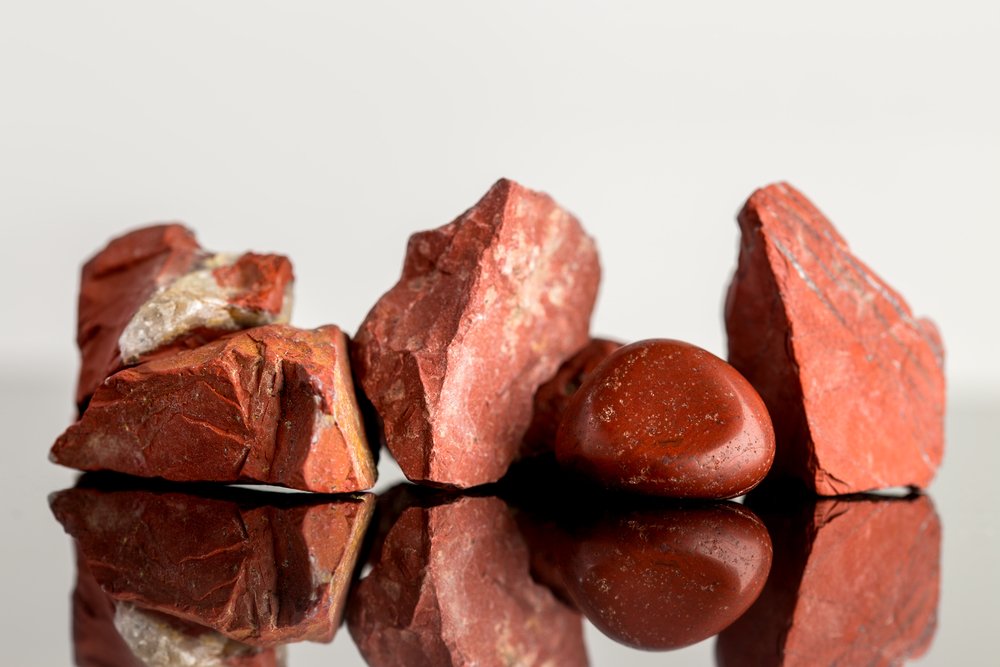
Almost ubiquitous in the United States, the various forms of cryptocrystalline silica are easier to find than to identify in most cases. Or at least to avoid an argument about classification as every rockhound seems to have a slightly different line drawn on what constitutes each. Jasper, agate, and chalcedony forms are all found in Maine. It just depends on the location you’re hunting in.
All three of these are technically forms of chalcedony. Chalcedony itself is a mixture of interlocked quartz and moganite crystals, creating a stone that’s smooth, waxy, and has a crystalline structure that’s impossible to observe with the naked eye. For all intents and purposes, they often appear more like glass than a quartz crystal.
Maine has a variety of agates, a lot of jasper, and a few bits of botryoidal chalcedony. The latter is most often white, but it can also be found in a golden yellow in this state. Jasper Beach is a location with a lot of multicolored stones, but the red stone that gives the beach its name is actually rhyolite. Rhyolite and jasper are mixed up often (see: rainforest jasper) with the main difference being that rhyolite is fine-grained as opposed to cryptocrystalline. Both polish wonderfully as decorative pieces.
For those on the hunt, the following places are known to host interesting specimens:
- Jasper Beach
- Washington County
- Loring Cover
Just make sure that you’re following all regulations and you’ll be good to go!
- Online rock and mineral club for collectors of all levels!
- Find community with like-minded rock and mineral enthusiasts.
- Monthly Giveaways!
- Free Access to Entire Digital Library of Products (current and future products)*


